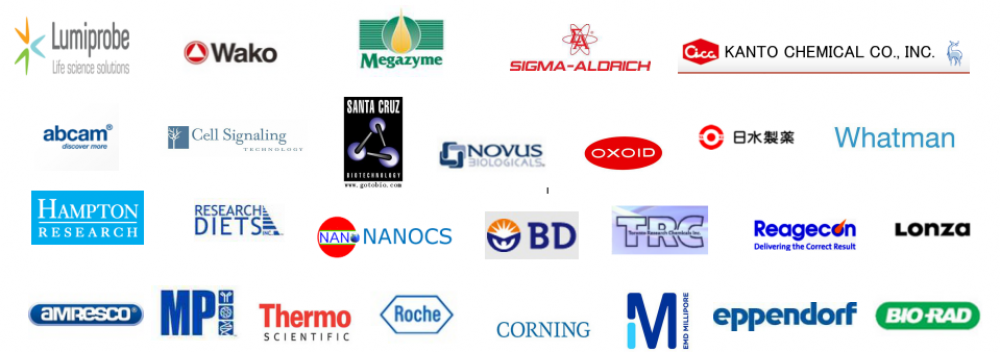产品编号
PG363
Human Galectin-3/Mac-2 ELISA Kit
96次
2198
的Human Galectin-3/Mac-2 ELISA Kit (Human Galectin-3/Mac-2 Enzyme-Linked ImmunoSorbent Assay Kit),即人半乳糖凝集素3酶联免疫吸附检测试剂盒,是一种用于特异性地高灵敏地定量检测人血清、血浆或细胞培养上清液中的 Galectin-3的ELISA试剂盒。
本产品检测灵敏度高,特异性强,重复性好。多次重复检测结果表明,最小检出量为62pg/ml,与人Galectin-1、Galectin-2、Galectin-4没有交叉反应,与小鼠Galectin-3有24.8%的交叉反应,板内、板间变异系数均小于10%。
半乳糖凝集素3 (Galectin-3),又称Mac-2,是目前已知半乳糖凝集素家族中唯一一个属于one CRD类型且具有特殊N端结构的半乳糖凝集素分子。半乳糖凝集素家族都不具有经典的信号肽,但在胞内胞外都能检测到具有活性的半乳糖凝集素。它们主要参与细胞粘附、迁移、存活和凋亡过程,在肿瘤环境中会出现一定程度的上调或下调。人和小鼠Galectin-3具有86%的氨基酸同源性。人Galectin-3具有250个氨基酸,分子量为29-36kDa,在巨噬细胞、活化的T细胞、破骨细胞、上皮细胞、肿瘤细胞和成纤维细胞等多种细胞类型中都有表达。与单核细胞和树突状细胞相比,Galectin-3在巨噬细胞中的表达量相对较高。目前已知,在类风湿性关节炎、白塞氏病和多种肿瘤,特别是当发生肿瘤转移时,半乳糖凝集素3的水平会有所升高。
通过与胞内胞外各种结合蛋白结合,Galectin-3能够发挥多种作用。核内Galectin-3能够改变基因表达,而在细胞质中,Galectin-3能够抑制细胞凋亡,参与细胞胞吐和内吞过程,同时还参与巨噬细胞对于凋亡细胞的清除过程。在细胞外,Galectin-3能够与白色念珠菌、肺炎链球菌等特殊病原体表面糖类物质结合,在先天免疫中发挥调理素的作用。还可作为巨噬细胞趋化因子,并诱导中性粒细胞的免疫应答。Galectin-3与血管内皮细胞结合刺激血管生成,与成纤维细胞结合则能促进纤维化。
本试剂盒采用双抗体夹心ELISA法(Sandwich ELISA)检测样品中人Galectin-3的浓度,其原理见图1。人Galectin-3特异的单克隆捕获抗体已预包被于酶标板上,当加入标准品或样品时,其中的人Galectin-3会与捕获抗体结合。当加入生物素化的抗人Galectin-3抗体后,生物素化抗人Galectin-3抗体与人Galectin-3结合,形成夹心的免疫复合物。随后加入辣根过氧化物酶标记Streptavidin (HRP-Streptavidin),由于生物素与链霉亲和素(Streptavidin)可以特异性地结合,因此链霉亲和素连接的HRP就会与夹心的免疫复合物连接起来而被固相捕获。最后加入显色剂TMB溶液,固相捕获的辣根过氧化物酶就会催化无色的显色剂氧化成蓝色物质,在加入终止液后呈黄色。通过酶标仪检测450nm处的吸光度值就能实现定量检测。人Galectin-3浓度与A450值呈正比,通过绘制标准曲线,对照样品吸光度值,即可计算出样品中靶蛋白浓度。
图1. 双抗体夹心ELISA原理图。
一个包装的本试剂盒,包括标准品检测,可以进行96次检测。
包装清单:
产品编号
产品名称
包装
PG363-1
人 Galectin-3/Mac-2抗体预包被板
8孔×12条
PG363-2
样品分析缓冲液
5ml
PG363-3
标准品稀释液
10ml
PG363-4
人 Galectin-3/Mac-2标准品
2-4瓶
PG363-5
人 Galectin-3/Mac-2生物素化抗体
10ml
PG363-6
辣根过氧化物酶标记Streptavidin
10ml
PG363-7
洗涤液(20X)
30ml
PG363-8
TMB溶液
10ml
PG363-9
终止液
5ml
PG363-10
封板膜(透明)
2张
PG363-11
封板膜(白色)
2张
—
说明书
1份
保存条件:
标准品4℃保存,1-2周内有效,-20℃保存6个月内有效,试剂盒其它组分4℃保存6个月内有效。除标准品外,试剂盒其它组分严禁冻存。
注意事项:
由于标准品一般是冻干粉,在制备后需要严格校准,所以标准品的瓶数及每瓶标准品所需加入的稀释液体积请以实际收到的试剂盒及标准品标签上的标注为准。
洗涤液(20X)在低温下可能有结晶,如果发现有结晶,请室温水浴加热使结晶完全溶解后再配制工作液。
为保证标准品的精确性,标准品配制使用后,如果有剩余请勿再次使用。
TMB溶液请勿接触氧化剂和金属,否则容易失效。
加样时,请注意每个样品或标准品必须更换枪头,一方面避免交叉污染,另一方面也避免吸取体积的误差。
由于本试剂盒均经过独立测试,所以请勿混用不同货号和不同批次的试剂盒组分,即使是同种试剂盒不同批次的试剂盒组分也不能混用。多个试剂盒同时检测时,请独立使用各个试剂盒中的试剂,请勿使用不同试剂盒中相同名称的组分。
充分混匀对保证反应结果的精准性很重要,在加液后请轻轻晃动整个96孔板,以保证混匀。
本试剂盒很多操作在室温进行,要求严格控制室温在25-28℃。温度低于25℃会导致最终检测到的吸光度显著下降。
洗涤过程非常重要,洗涤不充分会使精确度下降并导致结果误差较大。
检测标准品和样品时建议设置重复孔,以确保检测结果的可信度。
加样过程中须避免气泡的产生。
本产品仅限于专业人员的科学研究用,不得用于临床诊断或治疗,不得用于食品或药品,不得存放于普通住宅内。
为了您的安全和健康,请穿实验服并戴一次性手套操作。
